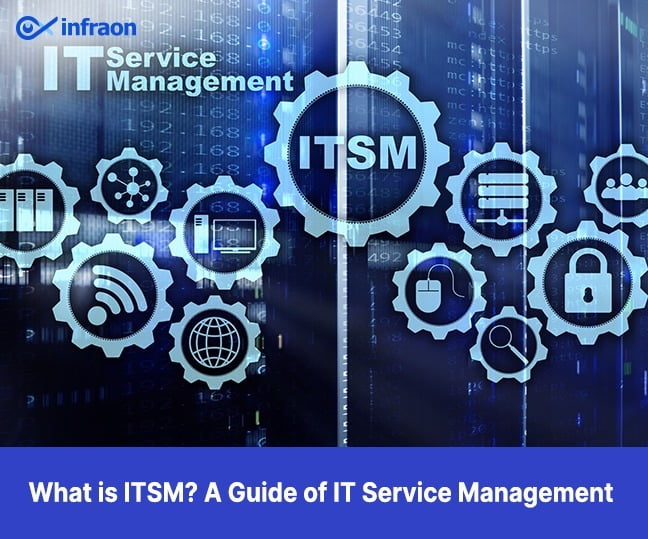In modern business environments, IT administrators help support and maintain the overall technological infrastructure of organizations. With the rise of workflow automation in IT operations, there is a marked increase in productivity and operational performance.
Workflow automation in IT operations refers to the strategic application of technologies to carry out routine, complex tasks that traditionally require manual effort. This change is crucial for transforming IT departments by decreasing the manual workload and improving system performance.
Related blog: A Complete Guide of Workflow Automation
Core components of workflow automation
- Artificial Intelligence (AI): AI enhances IT operations by automating decision-making processes, completing tasks typically requiring human intelligence, and proactively managing IT systems.
- Machine Learning (ML): ML algorithms analyze data and improve automatically through experience, which helps in anticipating issues, streamlining problem resolution, and optimizing system operations.
- Robotic Process Automation (RPA): RPA uses bots to automate critical yet mundane tasks such as data entry and process monitoring, freeing IT admins from routine duties and allowing them to focus on more strategic initiatives.
Benefits of workflow automation for IT admins
- Streamlined operations: Automation simplifies task execution, reduces error occurrence, and enables a more straightforward approach to managing IT environments.
- Increased productive time: By automating routine tasks, IT admins can dedicate more time to focus on strategic projects that add value to the business.
- Enhanced job satisfaction: Automating mundane tasks reduces job monotony, making the IT admin role more dynamic and engaging.
- Faster response to issues: Automated systems can detect and respond to system anomalies or breakdowns faster than manual processes, reducing downtime and improving overall business continuity.
Impact of automation on asset management
Asset management within IT involves the comprehensive tracking and management of a company’s hardware and software assets. Traditional tasks include inventory management, lifecycle management, and compliance with regulations and corporate policies. These tasks are often labor-intensive and prone to errors because of the tedious manual data entry process and the complexity of tracking assets across their lifecycle from procurement to disposal.
- Automated asset tracking: By using barcode scanners and RFID technology, automation systems can instantly record asset details into a management system, reducing errors associated with manual data entry.
- Lifecycle management: Automation software can monitor and manage the lifecycle stages of assets, sending alerts when equipment is due for maintenance, replacement, or disposal, thus ensuring optimal asset utilization.
- Compliance: Automated systems can help ensure compliance by maintaining detailed logs of asset use and decommissioning, simplifying audits and adhering to both internal policies and external regulations.
Transforming ITSM through workflow automation

IT Service Management (ITSM) covers a variety of functions designed to manage the end-to-end delivery of IT services. Key functions such as service request management, ticketing, and incident management often suffer from inefficiencies due to manual-intensive workflows and the skyrocketing volume of requests.
Service requests and ticketing: Automation tools can automatically classify and route tickets, prioritize them based on urgency, and suggest solutions based on previous tickets. This speeds up resolution times and reduces the workload on IT staff.
Incident management: Automated systems can detect and diagnose issues faster, often resolving them with minimal human intervention. For more complex incidents, they ensure that the right personnel are alerted immediately.
Change management: Automated tools streamline the change request process by ensuring all steps are followed.
- Approvals are obtained as needed.
- All stakeholders are kept informed, significantly reducing the chances of downtime caused by human error.
Enhancing network management with workflow automation
Today’s network environments are characterized by their vast complexity, encompassing an array of devices, connections, applications, and data flows. Managing such environments demands constant vigilance and adaptability to ensure smooth operations and service delivery. Automation helps simplify the management of complex networks by:
- Monitoring network traffic: Automated tools continuously monitor network traffic, identifying unusual patterns or potential bottlenecks without human intervention. This real-time surveillance helps administrators manage network loads effectively.
- Managing configurations: Configuration management can be automated to apply consistent settings across devices, reducing manual errors and ensuring compliance with network policies.
- Predicting network failures: Automation technologies utilize historical data and real-time insights to predict and alert about potential network failures before they occur, allowing preemptive action to avoid downtime.
Strengthening security with automated workflows
Automated security systems enhance the responsiveness and accuracy of security operations by quickly responding to vulnerabilities. These systems can respond to security threats and vulnerabilities much faster than manual processes, often neutralizing threats before they can cause harm.
Workflow automation also helps with accurate threat assessment, reducing human error in threat identification and assessment. Of course, certain security tasks are particularly well-suited for automation due to their repetitive and time-sensitive nature.
These include:
- Patch management: Automated systems can detect the release of new patches and apply them across the network, ensuring all systems are up-to-date without manual oversight.
- Threat detection: Automation enhances threat detection by analyzing patterns and anomalies that might go unnoticed by human observers.
As technology landscapes continue to evolve, the role of automation in maximizing the potential of IT teams becomes increasingly clear. Hence, especially from the POV of IT admins, workflow automation is a strategic necessity in modern operations.
Related blog: Integrated ITSM workflows: The backbone of efficient service management




















